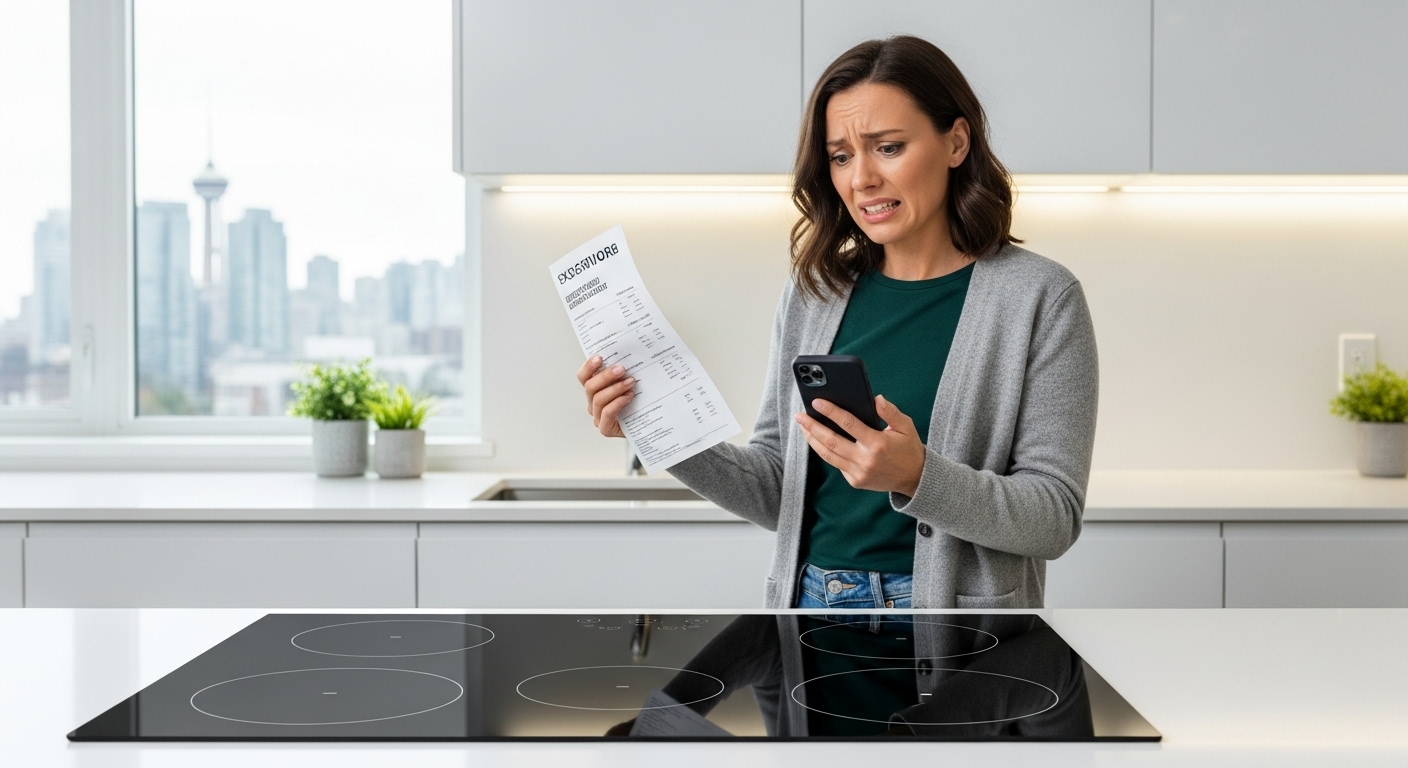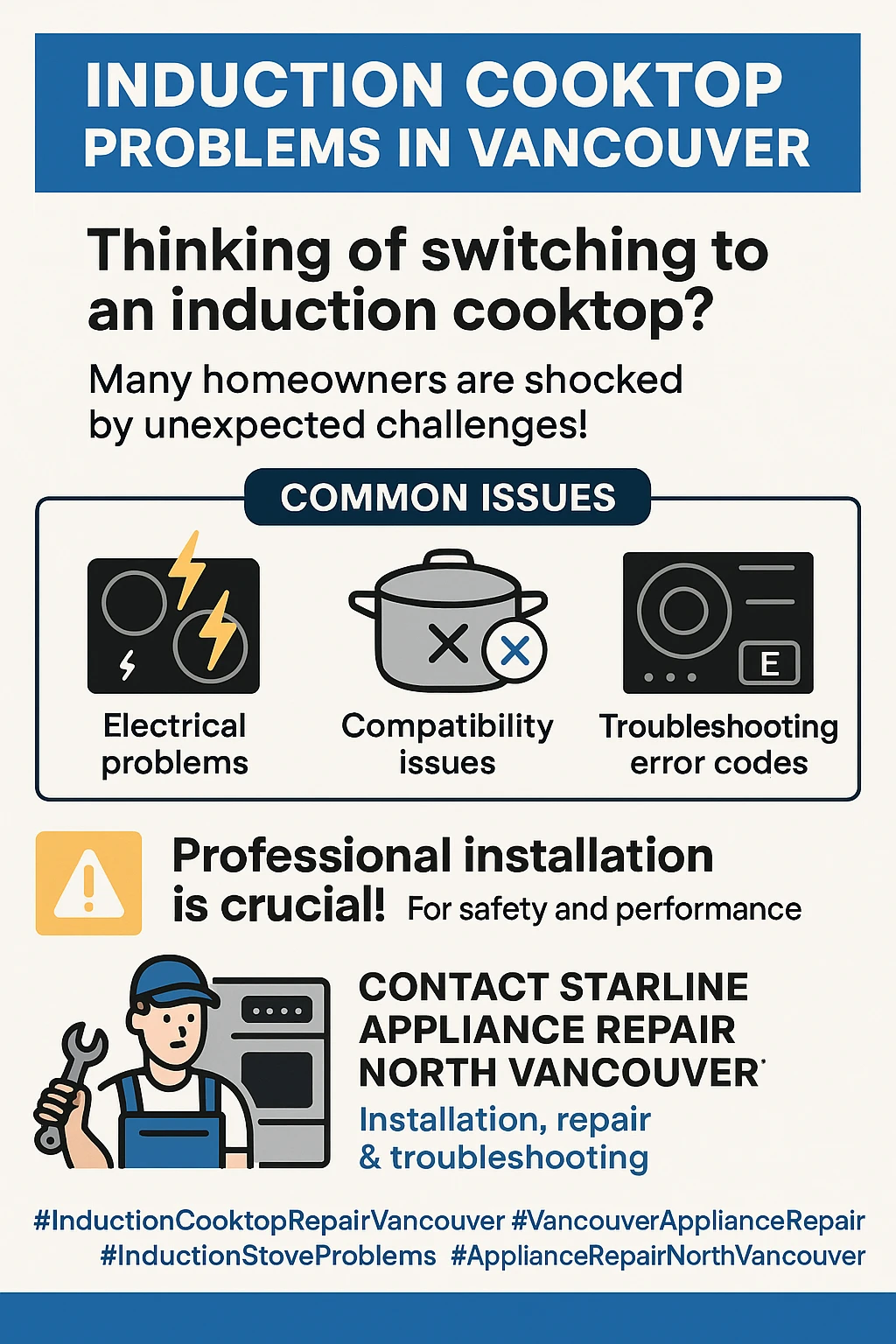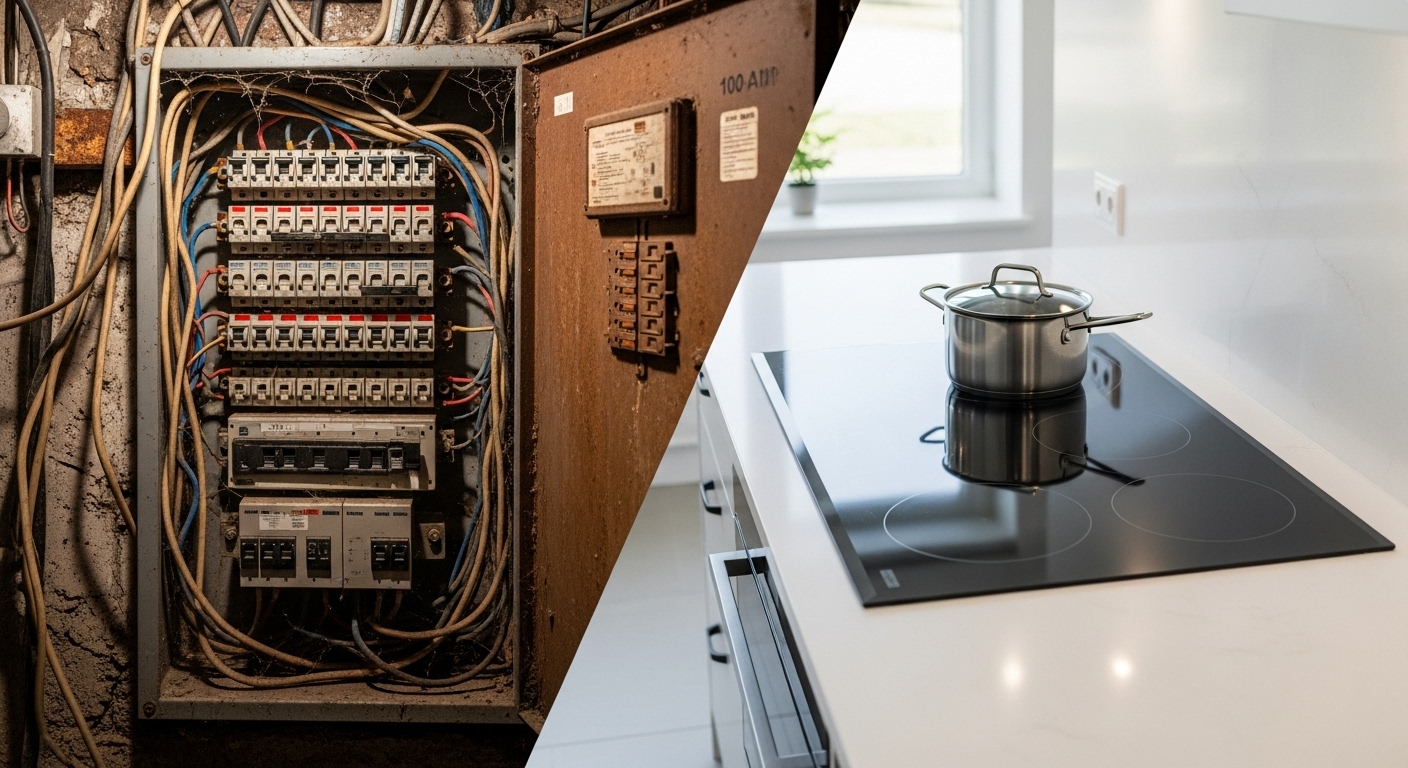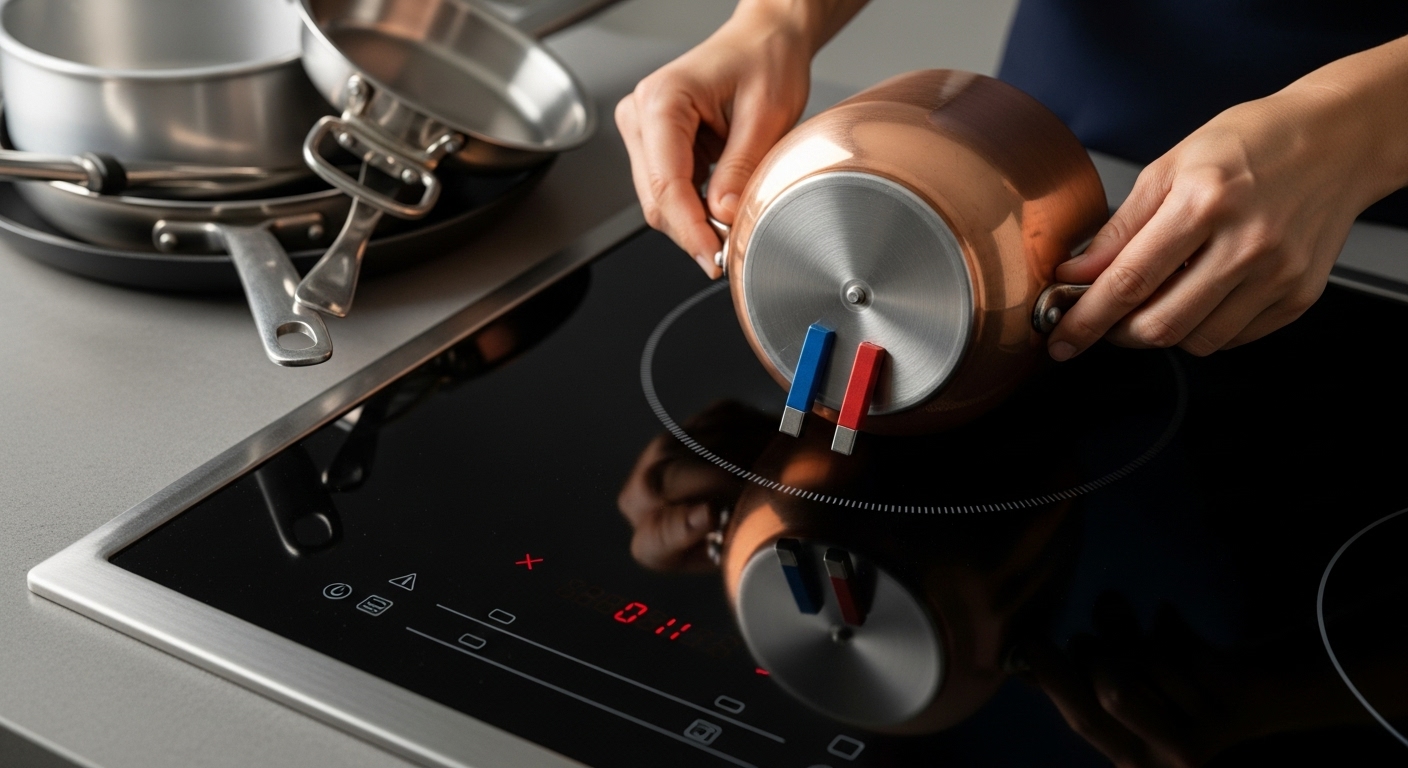Struggling with your new induction cooktop installation or wondering why it’s not working as expected? You’re not alone—Vancouver homeowners are discovering that switching to induction technology involves more complexity than simply swapping appliances, from unexpected electrical upgrades to compatibility issues that can cost thousands.
Vancouver’s push toward electrification has sparked a surge in induction cooktop installations, but many homeowners are finding themselves overwhelmed by the technical requirements and hidden costs. What seems like a straightforward appliance upgrade often becomes a complex home renovation project involving electrical panel upgrades, new circuits, gas line modifications, and even complete cookware replacement. The promise of faster cooking and cleaner air comes with a steep learning curve that catches many off guard.

The confusion stems from fundamental differences between induction technology and traditional gas or electric cooktops. Unlike conventional stoves that generate heat directly, induction cooktops use electromagnetic fields to heat compatible cookware, requiring specific electrical infrastructure and magnetic-base pots and pans. This technology demands dedicated 240-volt circuits, precise cookware positioning, and understanding of normal operating behaviors that can seem like malfunctions to new users.
Understanding these challenges before making the switch can save you thousands of dollars and prevent the frustration that leads many Vancouver homeowners to regret their induction purchase. From installation requirements and compatibility issues to finding qualified repair technicians, this guide covers everything you need to know to make an informed decision about induction cooking in your Vancouver home.
Key Takeaways
- Induction cooktops require dedicated 240-volt circuits and may necessitate electrical panel upgrades costing $300-$4,000 in Vancouver homes, particularly in older buildings and multi-unit residences
- Only magnetic-base cookware works with induction technology—aluminum, copper, and non-magnetic stainless steel pans are incompatible, potentially requiring $300-$400 in cookware replacement
- Common problems like power cycling, heating issues, and control panel failures often result from improper installation, incompatible cookware, or user unfamiliarity rather than defective units
- Vancouver building codes require licensed electrician installation with permits, and gas line capping must be performed by certified plumbers for safety and insurance compliance
- Repair costs average $100-$536 depending on the issue, but finding technicians trained in induction technology can be challenging compared to traditional gas or electric stove repair

Understanding Vancouver’s Electrical Infrastructure Challenges for Induction Cooktops

The biggest shock for Vancouver homeowners switching to induction isn’t the technology itself—it’s discovering their home’s electrical system needs major upgrades to support it. Unlike gas stoves that only need a standard electrical connection for ignition and controls, induction cooktops demand dedicated 240-volt circuits with 40-50 amp capacity. This requirement catches many homeowners off guard, especially those living in Vancouver’s predominant older housing stock where electrical panels and wiring haven’t been updated since the mid-20th century.
The complexity multiplies in Vancouver’s high concentration of townhouses and condominiums. A local homeowner documented their installation experience: “The electrical work was surprisingly complicated. We live in a 3-story townhouse with no basement or attic to run wiring through. The electrical panel is on the second floor, and the kitchen is on the first floor.” Their solution involved routing metal-sheathed BX wiring through closets and pantries to avoid major drywall demolition, but still required professional installation and careful planning to meet building codes.
Vancouver’s older electrical infrastructure presents particular challenges that can dramatically increase installation costs. Many homes built before 2000 have 100-amp or 125-amp electrical panels that are already operating near capacity with air conditioning, electric heating, and modern appliances. Adding a high-draw induction cooktop often means upgrading the entire electrical service, not just adding a new circuit. One Vancouver resident noted that their building’s electrical capacity was “already fully populated with 2 air conditioners and other appliances,” requiring a complete 200-amp panel upgrade costing several thousand dollars before any cooktop installation could begin.
Cost Breakdown for Electrical Upgrades in Vancouver Market
The financial reality of induction installation in Vancouver varies dramatically based on your home’s existing infrastructure and layout. A detailed cost breakdown from a local Vancouver townhouse conversion shows the true scope: the induction cooktop itself cost $3,801, but electrical work added another $819 for a relatively straightforward installation. However, this represented a best-case scenario with accessible routing and adequate panel capacity. More complex installations can easily reach $4,000-$8,000 for electrical work alone.
The challenge intensifies in multi-unit buildings where electrical upgrades affect common property and building systems. Strata councils may require approval for work that impacts shared electrical infrastructure, and buildings with insufficient overall capacity may need expensive service upgrades that benefit the entire building but are paid for by individual owners. Some Vancouver condo owners have discovered that their desired induction upgrade requires “new, higher capacity lines from the basement of the building plus a new breaker panel,” adding “$2,000-$4,000 per apartment” just for the electrical infrastructure.
Labor costs compound the expense, with Vancouver electricians charging $50-$150 per hour for specialized work. Complex routing through finished spaces, working around existing mechanical systems, and ensuring code compliance can extend installation time significantly. Professional installation requirements mean homeowners can’t reduce costs through DIY electrical work—all 240-volt circuit installation must be performed by licensed electricians and inspected for code compliance.
Vancouver Building Code and Permit Requirements
Vancouver’s regulatory environment adds another layer of complexity that many homeowners overlook when budgeting for induction installation. All electrical work for induction cooktops requires building permits and must comply with BC’s Energy Efficiency Standards Regulation, which governs appliance installations throughout the province. The permit process isn’t just bureaucratic box-checking—it ensures installations meet safety standards and maintain insurance validity.
The permitting process typically costs $50-$300 depending on the scope of work, but the real expense comes from ensuring compliance with current electrical codes. Vancouver’s building standards require GFCI protection, proper grounding, and specific circuit sizing that may not have existed when older homes were built. Licensed electricians must certify that installations meet these current standards, often requiring additional safety upgrades beyond just the new circuit installation.
Gas line modifications add another regulatory layer since most induction conversions involve capping existing natural gas connections. This work requires licensed plumbers and separate permits to ensure safe disconnection and prevent future gas leaks. The combination of electrical and plumbing permits, required inspections, and professional installation creates a regulatory framework that prevents shortcuts but ensures safe, compliant installations that won’t create problems during home sales or insurance claims.
The Cookware Compatibility Crisis Nobody Warned You About

After navigating electrical upgrades and installation permits, Vancouver homeowners often discover their cookware collection is suddenly obsolete. This revelation typically comes at the worst possible time—after installation is complete and they’re eagerly testing their new induction cooktop for the first time. The magnetic requirements of induction technology mean that popular cookware materials like aluminum, copper, and non-magnetic stainless steel simply won’t work, regardless of quality or cost.
The compatibility test is deceptively simple but definitively revealing: a refrigerator magnet held to the bottom of a pot or pan will stick firmly if the cookware is induction-compatible. However, many homeowners discover this test too late, after assuming their expensive stainless steel or professional-grade aluminum cookware would naturally work with their premium new appliance. The magnetic requirement isn’t a design flaw—it’s fundamental to how induction technology creates heat through electromagnetic interaction with ferromagnetic materials.
Vancouver homeowners report spending $300-$400 replacing incompatible cookware, a cost that’s rarely included in initial induction conversion budgets. This expense can be particularly shocking for those with extensive collections of copper-core or aluminum cookware that represented significant previous investments. The replacement cost isn’t just about buying new pans—it’s about learning which materials work reliably and understanding how induction-compatible cookware performs differently than what they’re used to.
The Magnetic Test and Material Breakdown
Understanding which materials work with induction requires more than just knowing “magnetic equals compatible.” Cast iron and enameled cast iron work perfectly, providing even heating and excellent heat retention. Most stainless steel cookware labeled “18/10” works if it has a magnetic base layer, but some premium stainless steel

